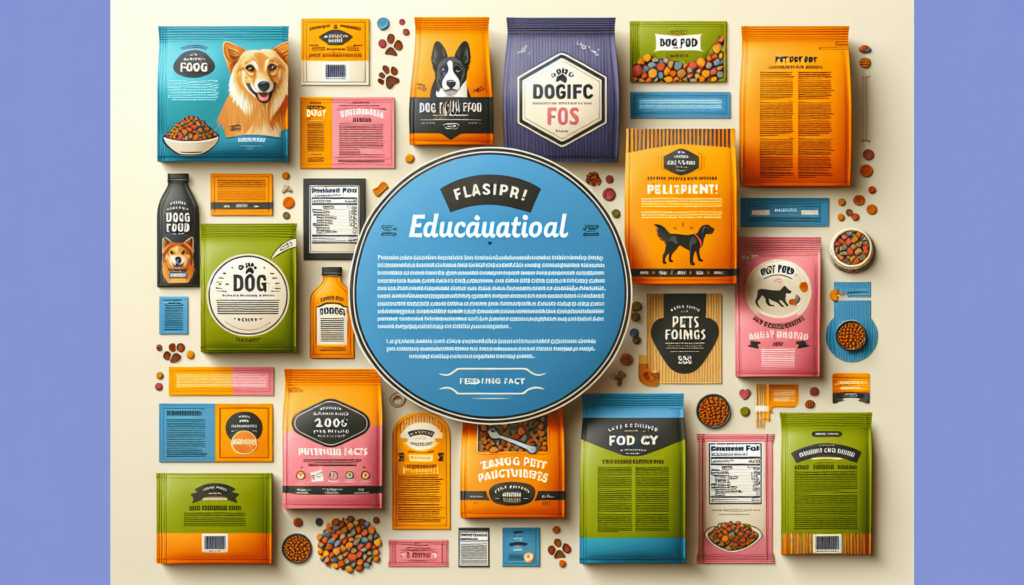Have you ever stood in the pet food aisle, staring at the vast selection of dog food, wondering how on earth to make sense of the labels? You’re certainly not alone in this! As a dog owner, I know firsthand how bewildering and overwhelming those labels can be. Each label is packed with a mix of bold claims, long lists of ingredients, and percentages that can be difficult to decipher. The crucial question is, how do I read dog food labels to ensure I’m picking the best option for my furry friend?

Understanding the Importance of Reading Dog Food Labels
Dog food labels are essential tools that guide us in choosing healthy and nutritious food for our dogs. These labels provide crucial information about the product, such as its nutritional value, ingredients, and any additives or preservatives. Reading and understanding these labels mean more than just picking out the most colorful bag or the one with the happiest dog; it involves making informed choices that can affect our pet’s health and well-being.
The Basics of Dog Food Labeling
Let’s start by breaking down the basic components of dog food labeling. In many ways, labels serve a similar function to those on human food products, but they can sometimes be more complex. Each label typically includes the product name, a guarantee analysis, an ingredient list, feeding instructions, and the manufacturer’s contact information.
AAFCO Nutritional Adequacy Statement
Ever notice the small print on dog food packages that mentions AAFCO? This acronym stands for the Association of American Feed Control Officials. It’s vital to check for an AAFCO statement on the label because it indicates that the food meets basic nutritional standards.
The Guaranteed Analysis
One of the first sections you’ll come across on a dog food label is the guaranteed analysis. This part lists the minimum levels of crude protein and fat, and the maximum levels of crude fiber and moisture. It’s crucial because it gives us a quantified look at what our dogs are consuming. But beware, this analysis doesn’t tell us the quality of these nutrients.
Ingredient List: Decoding the Line-Up
The ingredient list often seems daunting, but it can be our best friend in figuring out what’s actually in the food. Ingredients are listed by weight before processing, hence the order matters. If meat is listed first, that’s generally a good sign. However, be skeptical of buzzwords like “real meat” or “all-natural,” as these aren’t regulated terms and don’t necessarily mean the food is better.
Common Ingredients to Look For
It’s important to focus on high-quality proteins and wholesome grains. Ideally, look for recognizably whole ingredients like chicken, beef, or barley at the top of the list. Fillers like corn and soy might not be harmful, but they’re less nutrient-rich.
Recognizing Potential Red Flags
Ingredients like artificial preservatives, colors, and flavors might not be as beneficial, nor do they add nutritional value. If ingredients like BHA, BHT, or ethoxyquin are prevalent, it might be worth steering clear or inquiring about them further.
Nutritional Information and Terms
Beyond just the ingredients, products might highlight additional nutritional terms. Understanding these terms can significantly affect your choice:
- Complete and Balanced: Indicates the food is nutritionally sufficient.
- Grain-Free: Doesn’t contain grains, but double-check for fillers or other substitutes.
- Organic: Made of foods without chemical alterations, often better for your dog’s health.
Serving Size and Caloric Content
A frequently overlooked part of the label is the suggested serving size. While it might not seem like a big deal, overfeeding can lead to obesity, which in turn can cause numerous health issues for dogs. Therefore, always check the recommended portion and consider your dog’s age, weight, and activity level when deciding how much to feed.
Calculating Caloric Content
Metabolizable energy (ME) provides a glimpse into the caloric density of the food. This number, typically measured in kilocalories (kcal), tells us the energy provided to our dog’s body. A helpful tip is comparing the kcal per cup to gauge which foods are more calorie-dense, especially if managing weight is a concern.
Why Quality Matters: Health Implications
The right dog food can lead to a shiny coat, strong bones, and boundless energy. Conversely, poor-quality food lacking in essential nutrients might result in health issues, ranging from digestive troubles to serious long-term conditions. It’s much like our own diet; what you put in affects what you get out.
Special Diets and Dietary Considerations
Some dogs may have specific dietary needs, whether due to age, breed, or health conditions. Recognizing particular labeling for these needs can greatly impact their well-being. If your dog has food sensitivities or allergies, certain foods labeled as hypoallergenic can be immensely beneficial.

Common Misconceptions About Dog Food Labels
Labels can often be deceptive or misleading. Claimed meat content percentages on the front of packaging can be confusing without understanding their meaning. Grasping the truth behind phrases like “dinner” vs. “formula” or “with” can demystify these labels tremendously.
Marketing Tricks and Buzzwords
Marketing plays a massive role in how dog food is packaged. Terms like “premium” or “gourmet” aren’t regulated and don’t necessarily equate to higher quality. It’s crucial to look beyond the catchy titles and focus on the actual content listed.
Taking An Active Role in Your Pet’s Health
With so much information now at your disposal, think of yourself as an advocate for your dog’s health. By understanding dog food labels, you’re empowering yourself to make decisions that directly affect your dog’s longevity and happiness.
Monitoring Your Pet’s Reaction
Observe how your pet reacts to their food. Indicators like coat health, energy levels, and bowel movements can provide insight into how well-suited the food is for your dog.
Frequently Asked Questions About Reading Dog Food Labels
How can I tell if a dog food is good quality?
A good quality dog food will have high standards of protein sources, few fillers, and generally, will include an AAFCO nutritional adequacy statement. Check the ingredient list for whole foods like chicken or beef as the primary ingredient.
What does AAFCO certify?
AAFCO ensures the pet food meets minimum nutritional standards set for dogs, providing a benchmark for comparison. It doesn’t certify or approve foods, but provides guidelines for pet food nutrient profiles.
Why are meat meal ingredients controversial?
Meat meal can be a concentrated form of meat but can also include unsavory parts of animals if of lower quality. It’s important to check the quality and source of the meat meal.
Reading dog food labels might initially feel like a hassle, but it’s an invaluable skill that can greatly enhance your dog’s life. It’s about more than just what’s inside the bag; it’s about making informed, loving decisions for your furry friend. Here’s to healthier, happier tails for years to come!



